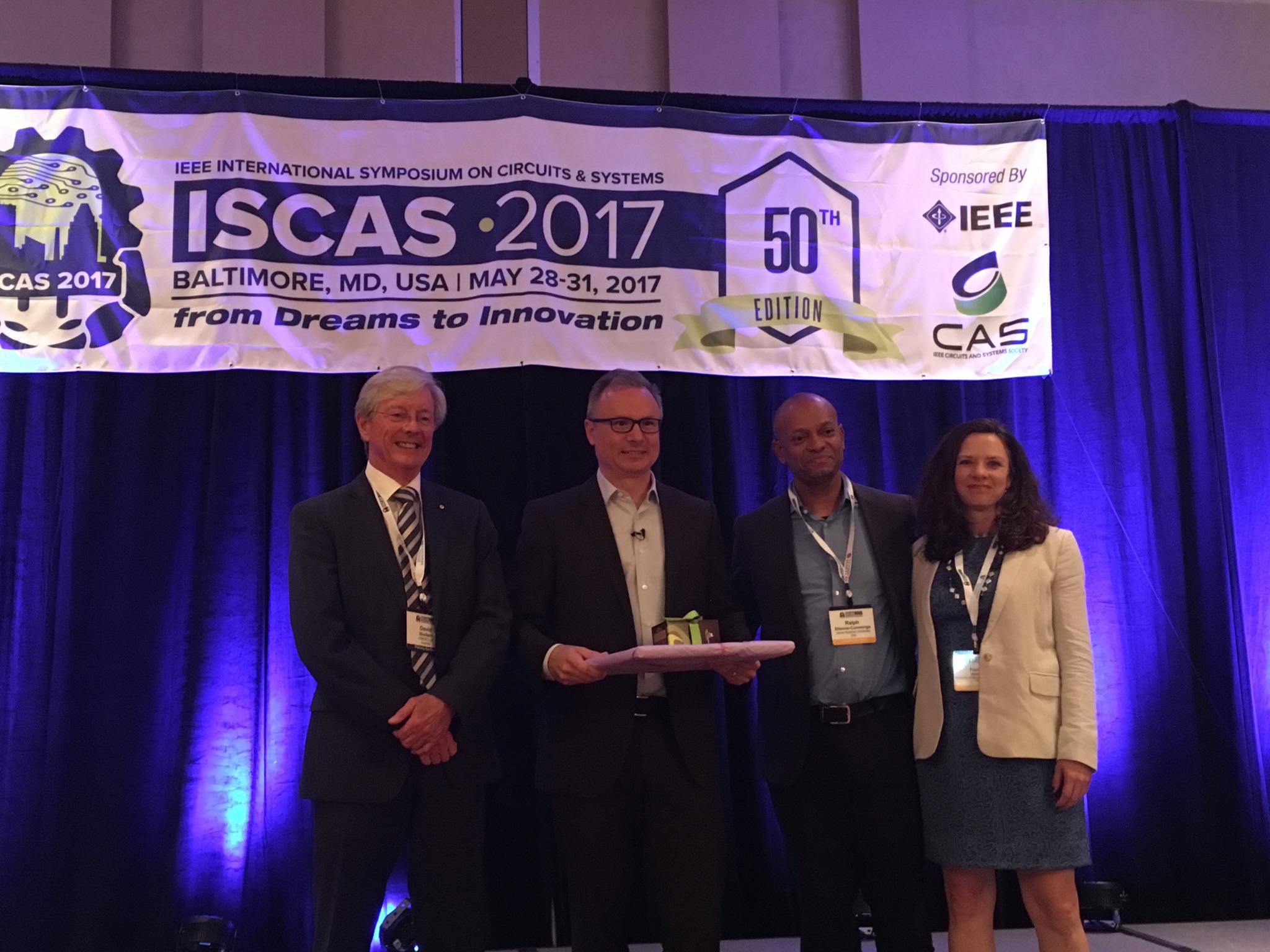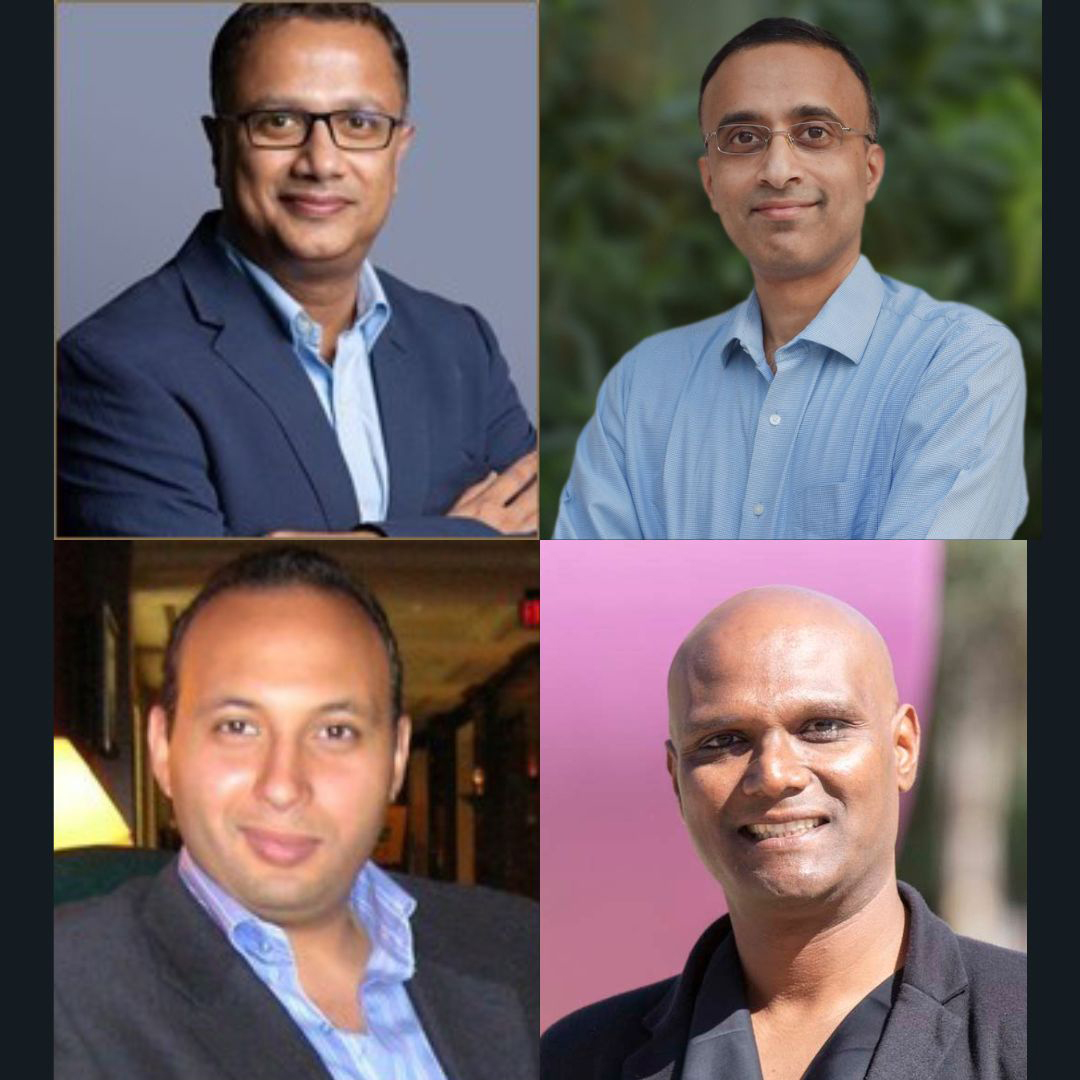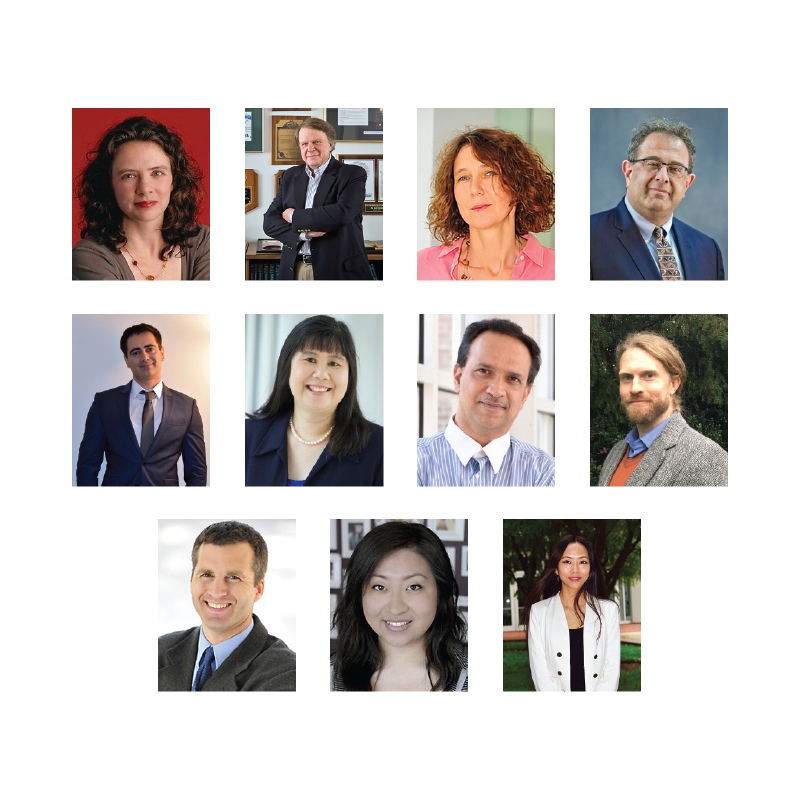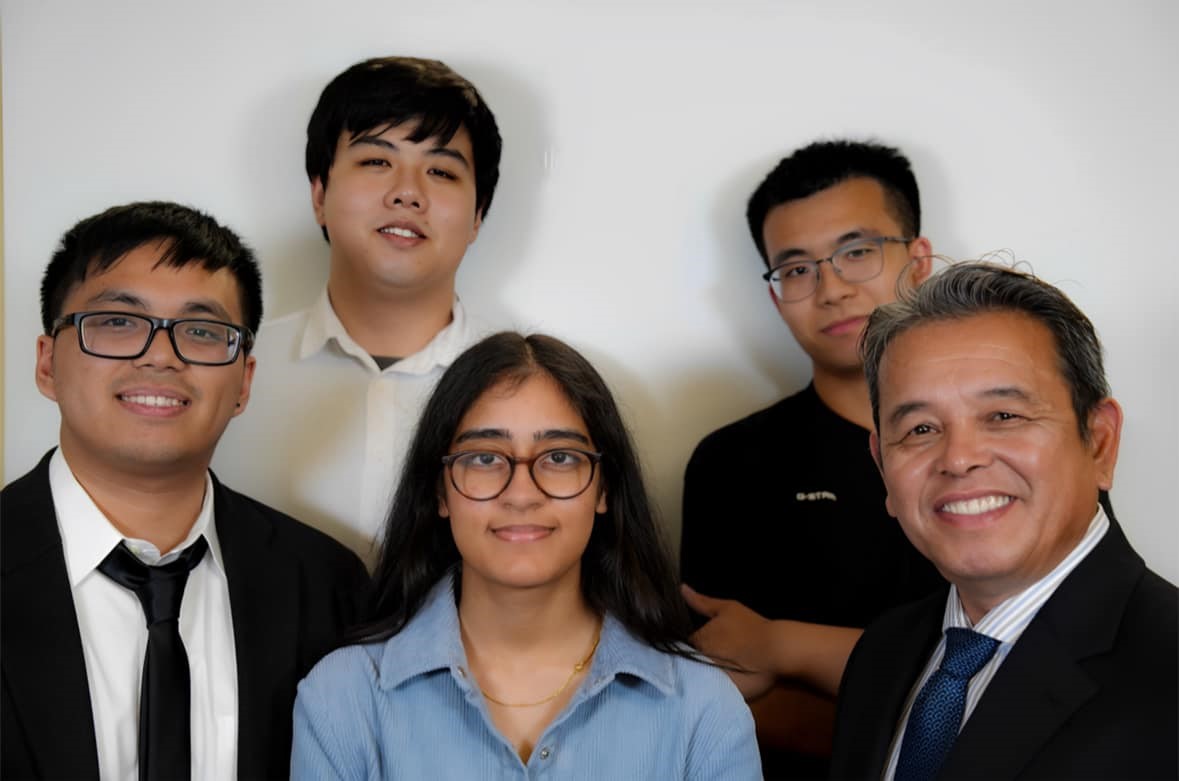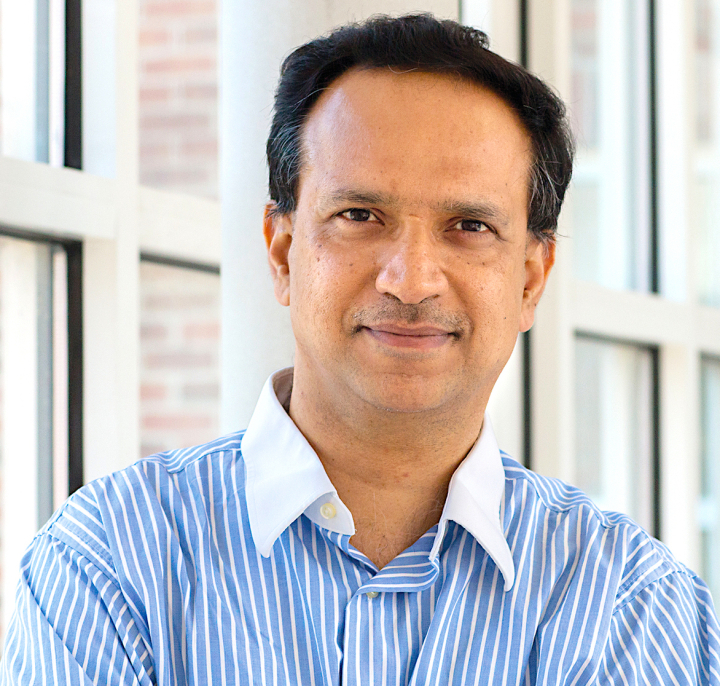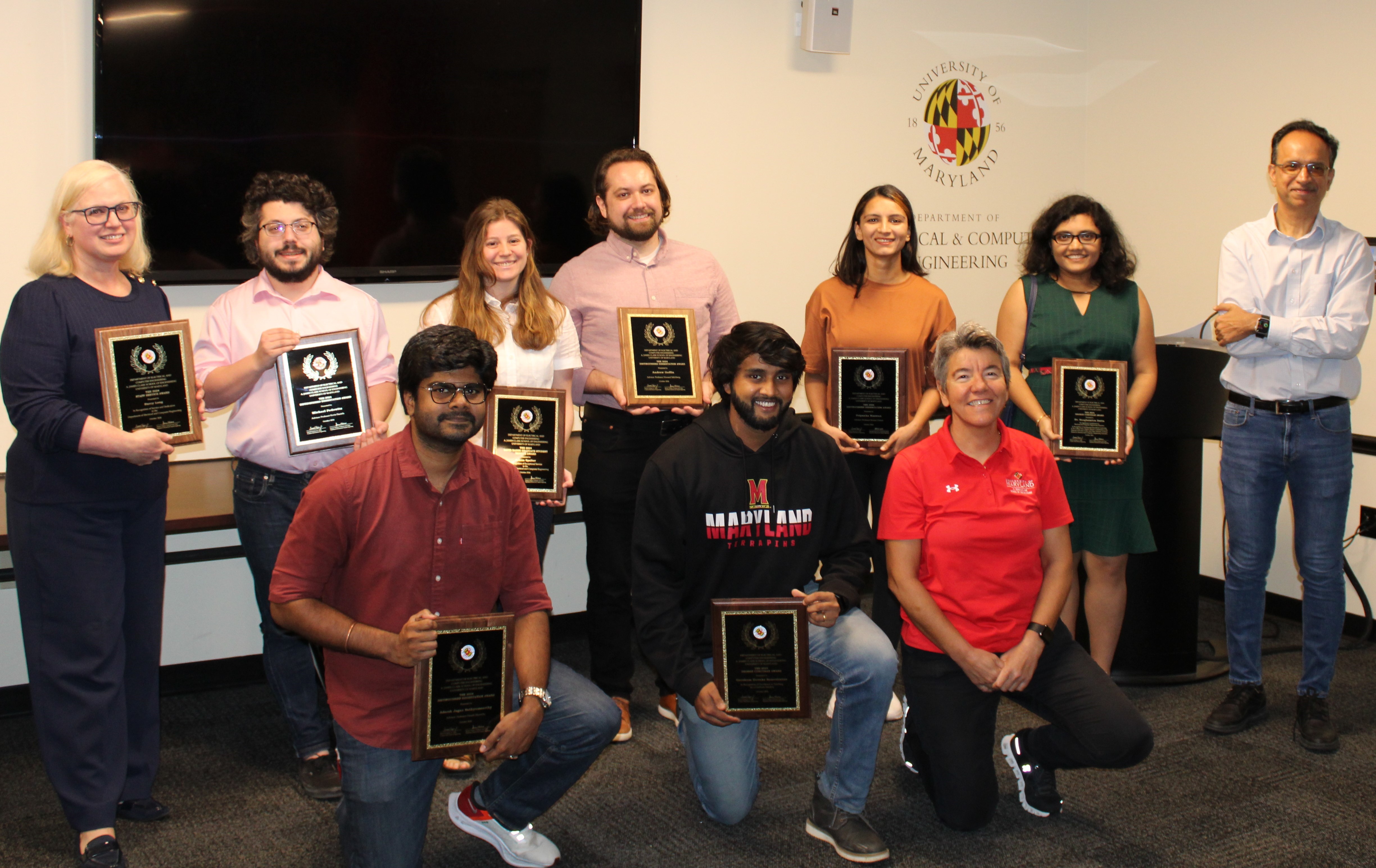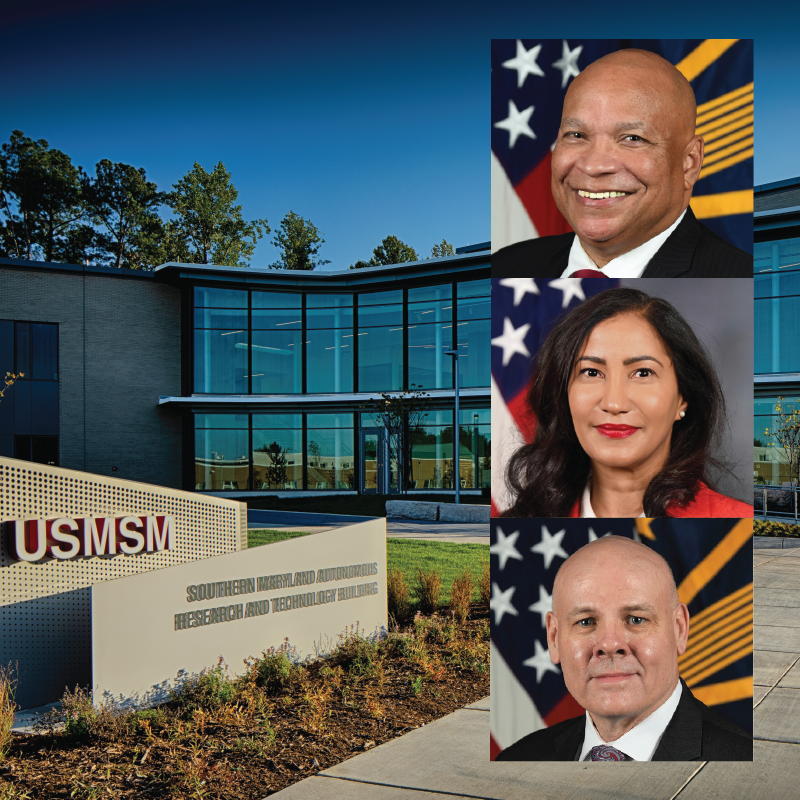News Story
Prof. Robert Newcomb to Lead FIRE Research Stream on Neural Systems and Neurotechnologies
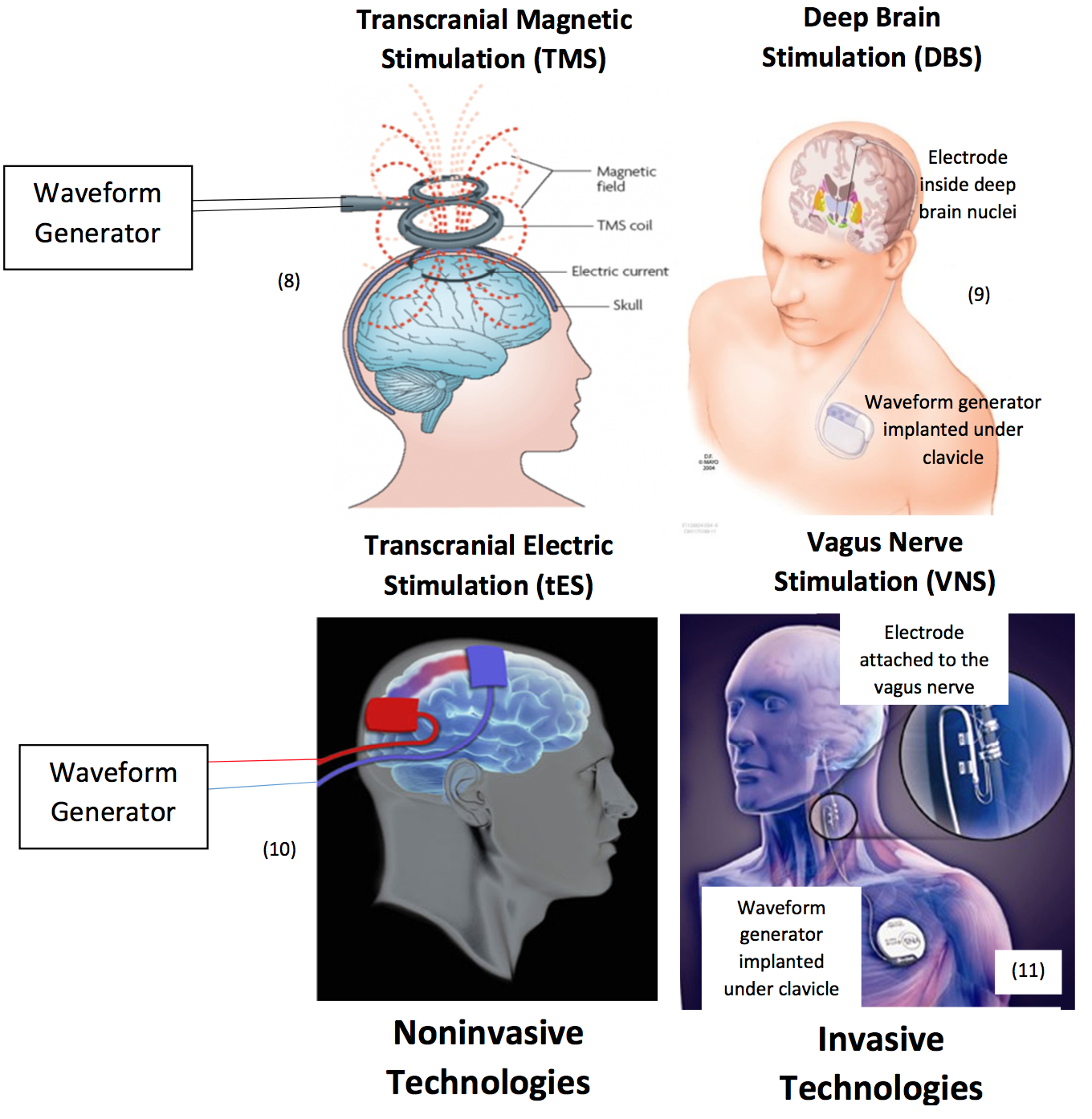
Beginning in January 2018, Prof. Robert Newcomb (ECE) will lead a University of Maryland (UMD) First-Year Innovation and Research Experience (FIRE) research stream on Neural Systems and Neurotechnologies. Developed in collaboration with the FDA under an M-CERSI grant, the FIRE stream will introduce UMD first-year students to a brave new era in medical research. In addition to applying a unique brand of engineering ingenuity to the design of therapeutic devices, this new era mainly aims to minimize the risks of, complement, and eventually replace clinical trials and animal testing via the use of realistic, predictive computational models of human anatomy.
The stream will be engaged in the fundamental goals of understanding, repairing, replacing, and enhancing the functioning of neural systems in a set of large nuclei deep in the brain under the cerebral cortex, collectively called basal ganglia and conspicuously involved in movement, motivation, cognition, and emotion. These deep brain nuclei and affiliated structures are generally implicated in a wide range of neurological and neuropsychiatric diseases, including Parkinson’s, Huntington’s, depression, addiction, OCD, ADHD, Tourette’s Syndrome, and even some aspects of Alzheimer’s, tinnitus, and autism.
Prof. Newcomb and Research Educator for the FIRE stream, Dr. Nevine El-leithy, are creating a novel neuromorphic neuromodulation (NN) system that will be applied to four different brain stimulation technologies: deep brain stimulation (DBS), vagal nerve stimulation (VNS), transcranial magnetic stimulation (TMS), and transcranial electrical stimulation (tES). Their NN system is being designed to achieve optimal control over the electromagnetic stimulation field within the brain in order to excite, inhibit, or synchronize neurons of the deep brain structures. In this way, they will be able to recalibrate neuronal activity in the pathways that connect the basal ganglia to the rest of the brain, thus overriding/interrupting abnormal electrophysiological signaling in the case of pathology, or augmenting normal electrophysiological signaling in the case of cognitive enhancement.
Through MIDA, a detailed and realistic anatomical computer model of the human head and neck, which is the brainchild of an international alliance of scientists, they are developing their neuromorphic neuromodulation model. MIDA was created primarily as a tool to simulate the interactions of brain tissues with electromagnetic fields generated by medical devices. Due to its high resolution, it offers them the flexibility of choosing the level of model accuracy. In fact, they are not only using MIDA to test and assess the safety, efficacy, quality and performance of the different brain stimulation systems, which they are designing, modifying, or optimizing. They are also working together with their FDA collaborators to enhance MIDA’s performance rendering it a gold-standard computational tool for electromagnetic modulation of brain activity.
“Our primary motivation is to circumvent the necessity of invasive procedures that require drilling a hole in the skull to place the stimulating electrodes as in DBS, which is currently the most successful brain stimulation technology for refractory Parkinson’s, OCD, Tourette’s and depression," says El-leithy. "Just as important, we aim to develop sound theories for establishing stimulation targets in the brain and for setting stimulation parameters instead of the commonly practiced trial-and-error approaches. Ultimately, it is our goal to create a noninvasive closed-loop brain stimulation technology that can detect physiological markers of pathology and thus respond in real time to the changing needs of individual patients. Also, in the future we intend to extend our research to brain stimulation technologies involving low-intensity focused ultrasound, which is both noninvasive and can achieve precise targeting of the brain regions of interest. The fact that MIDA distinguishes quite a large number of muscles, bones, skull layers, as well as, detailed deep brain structures makes it amenable for transcranial focused ultrasound modeling.”
Newcomb and El-leithy are looking into further collaborations with medical schools for the clinical trial phase in the future. They have started a dialogue with the Faculty of Medicine and Pharmacology of Rabat, Morocco. They are also interested in approaching the Michael J. Fox Foundation among other institutions with their research and models as well.
They consider this FIRE stream on Neural Systems and Neurotechnologies of the Deep Brain to be a pilot program for evolving and insightful educational approaches toward understanding the complexities of biomedical research questions of our times. "Introducing freshman students to advanced concepts of computational electromagnetics, neurophysiology, neural networks, anatomically accurate virtual populations, mathematical theories, and bioelectronics design while empowering them to partake in our day-to-day research endeavors is not the full story" says El-leithy. "We aspire to inculcate the young minds with a sublime sense of purpose, humanity, and inspiration in line with Dr. Newcomb’s pioneering legacy and our vision of science as a cognitive, emotional, and social process (as well as, perhaps, a spiritual one). We are currently also collaborating with Dr. Suzan Wray at NIH NINDS and Dr. Geoffrey Barrows, founder of Centeye. Zurich MedTech has offered us a great donation in the form of free licensing of their powerful software (Sim4Life), which includes computable human phantoms, to all our students and research team. But we are working on recruiting further support toward both our educational and research goals.”
The FIRE Program was initiated by UMD in 2014 to provide learning-through-research experiences, mentorship, and accelerated opportunities for first-year UMD students. It is a forum for the active, hands-on engagement of undergraduate students in ongoing academic research. It also emphasizes progression of research scholarship by encouraging the most promising students to stay involved in research activities during the summers and well beyond the freshman year. Students from all over campus, not just ECE, can participate in research streams including the one being created by Dr. Newcomb and El-leithy.
Published June 21, 2017
